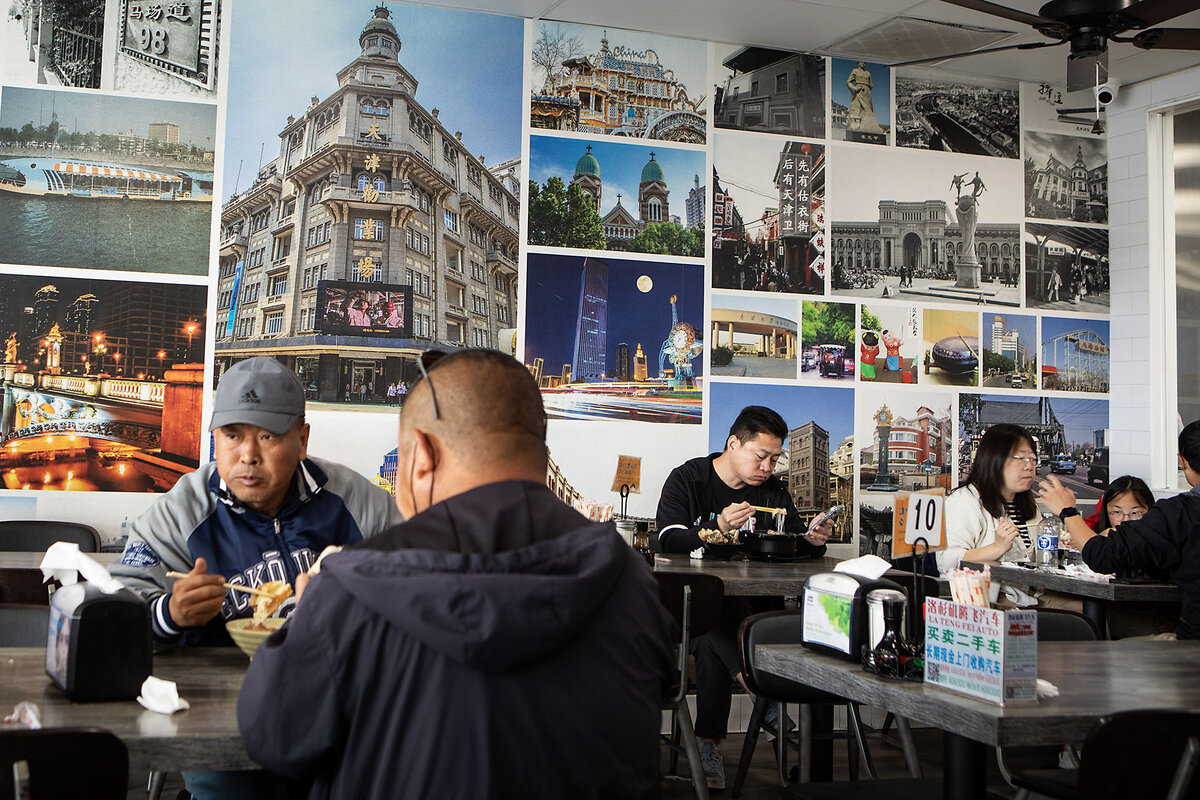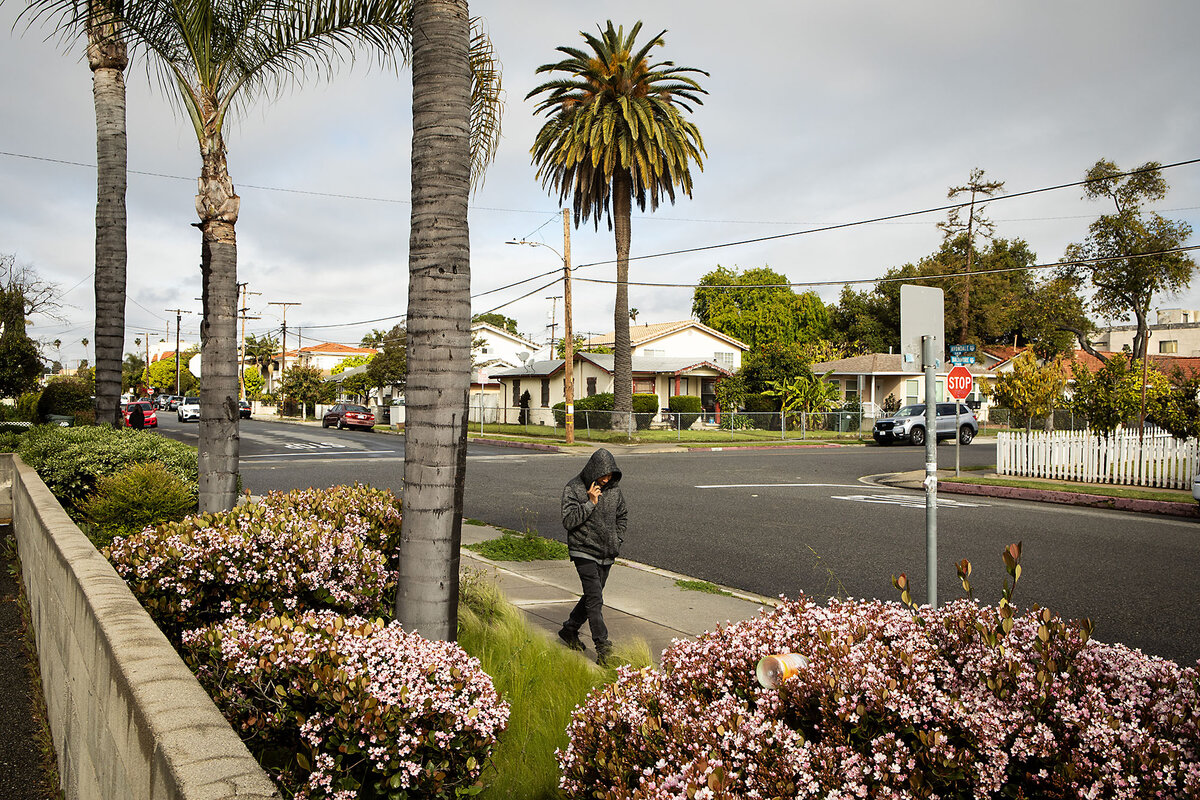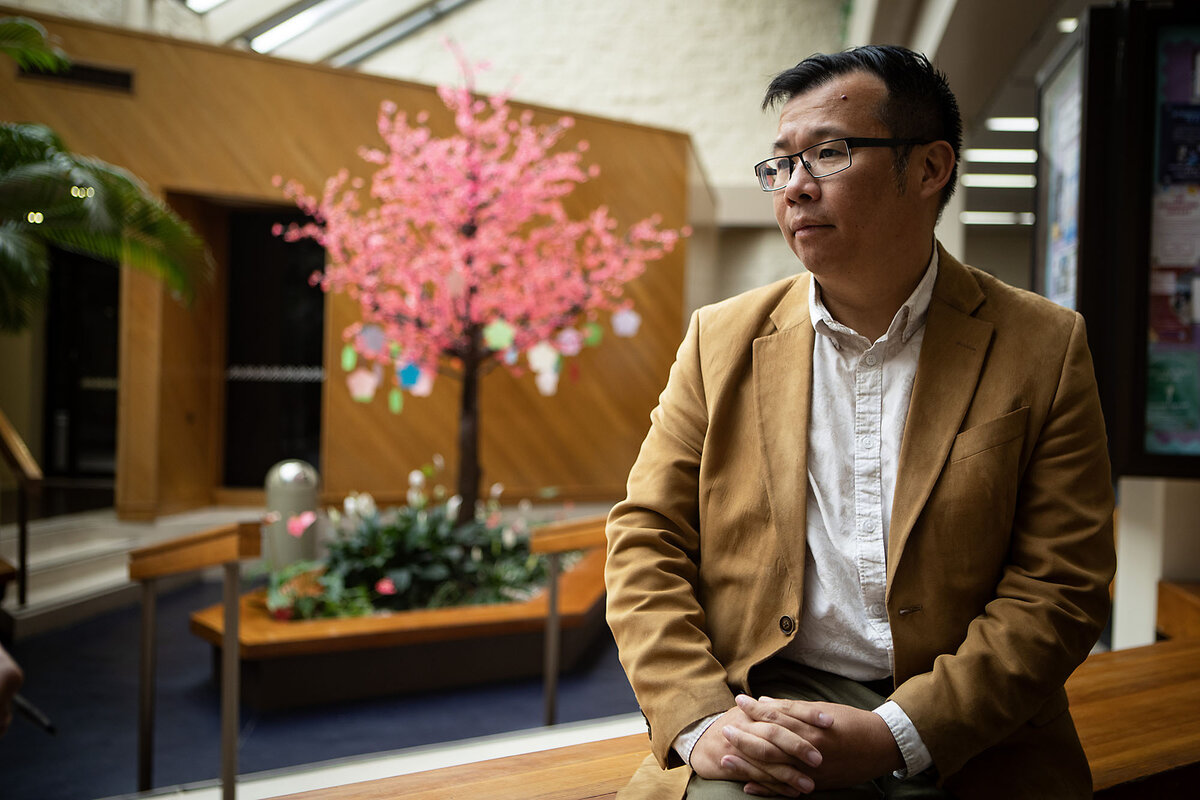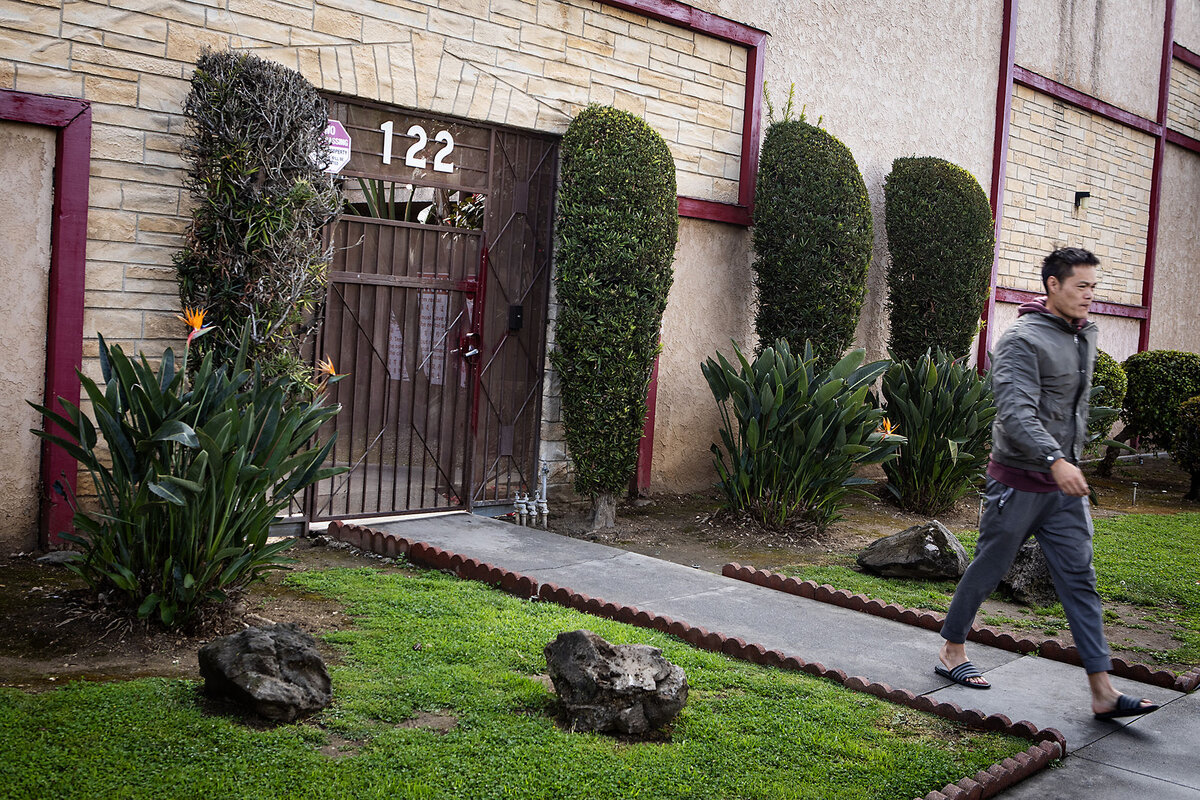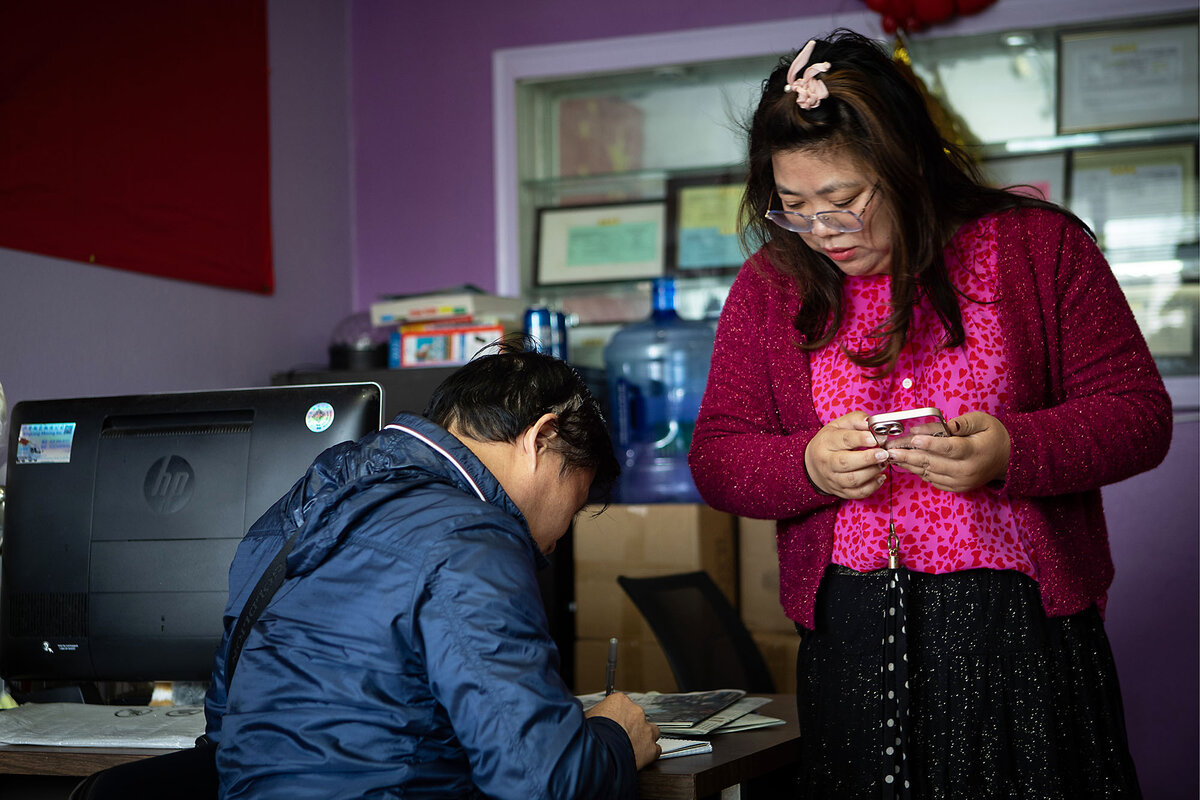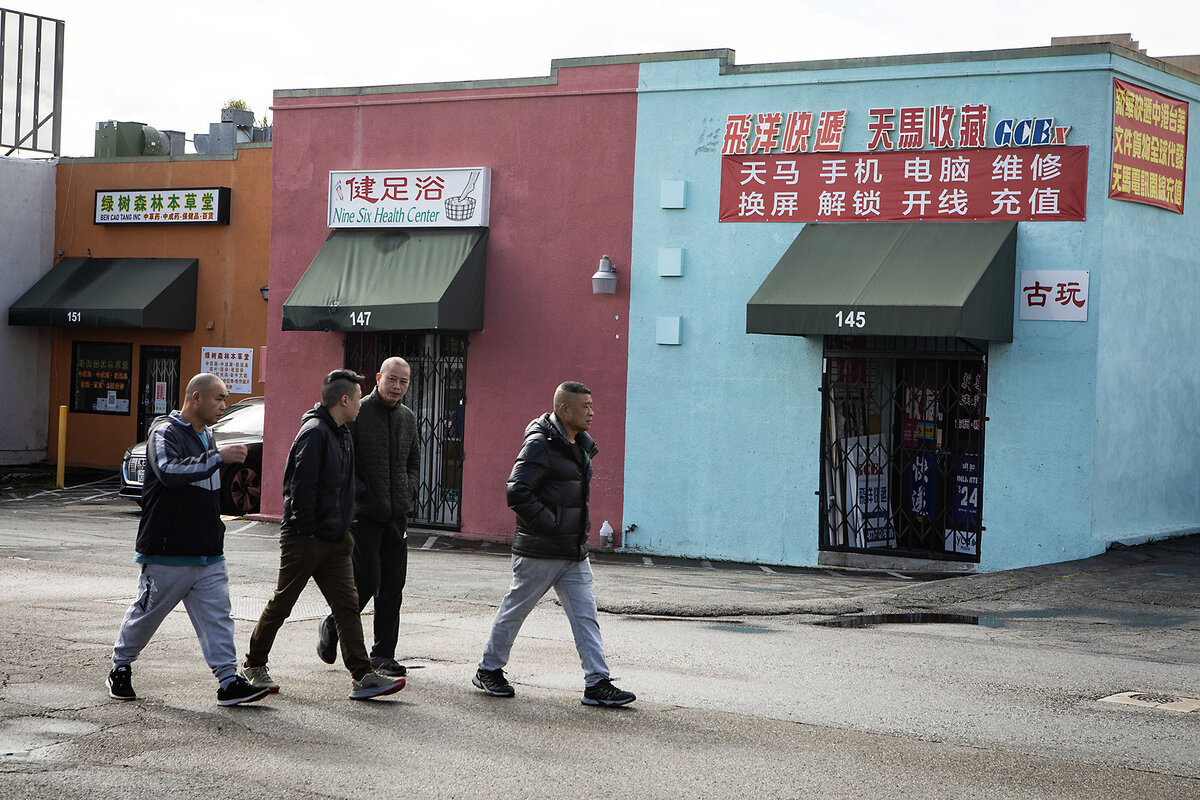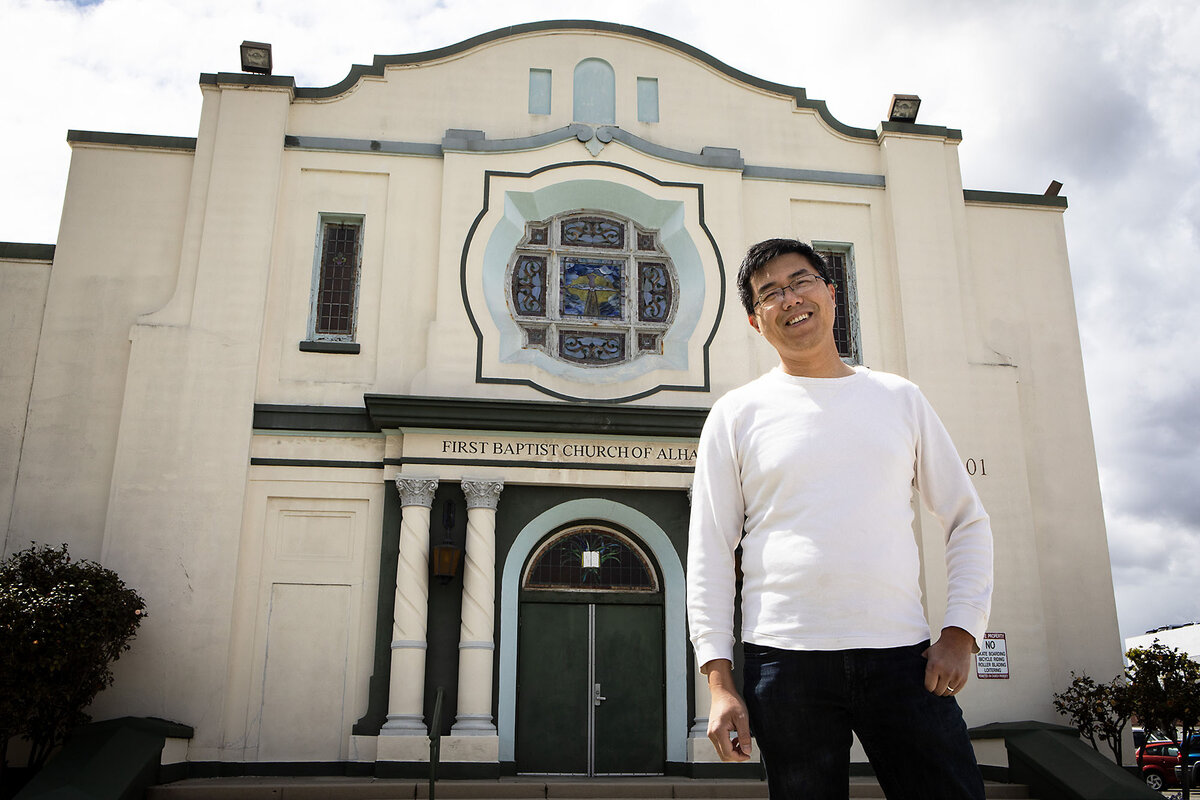Chinese migration to the US is soaring. Here’s what happens next.
Loading...
| Monterey Park, Calif.
Monterey Park, just east of Los Angeles on Interstate 10, has been a migrant magnet for decades and is known as America’s first suburban Chinatown.
Today this city – and the whole San Gabriel Valley – is seeing the results of record unauthorized immigration at the U.S.-Mexico border. A spike in Chinese migrants reflects the expanding diversity of nationalities among those crossing illegally from the south.
Why We Wrote This
A story focused onOur initial story on Chinese migrants explored why they are coming to the United States. Here we look at one community’s unofficial support structure for them – on everything from jobs to housing.
In interviews at the border, Chinese migrants told the Monitor that they were heading to American cities to meet relatives or contacts in New York, San Francisco, and Los Angeles, all hubs for Asian immigration.
In these urban areas, migrants can tap into long-established ethnic networks, unnoticed by outsiders and largely independent of public services like shelters, says Ken Guest, an anthropology professor at Baruch College and a Chinese migration expert.
“Along the way this infrastructure has been built up and allows ... new immigrants, even today, to flow into a system that’s in place, that’s ready for them,” he says.
On any given morning, small groups of men dressed in jeans and hoodies hang around the Fatty Ding’s shopping plaza in Monterey Park, California, waiting for day-labor jobs or just passing time. This modest square has ricocheted around social media as a recommended destination for Chinese migrants, who are crossing illegally over the southern border into the United States in record numbers.
Monterey Park, just east of Los Angeles on Interstate 10, has been a migrant magnet for decades and is known as America’s first suburban Chinatown. It sits in the sunbaked San Gabriel Valley, where the network of Chinese churches and temples, businesses, service agencies, and cheap rooms for rent makes this – and surrounding cities – an immigrant gateway.
“The San Gabriel Valley is really ground zero for Chinese migrants and asylum-seekers overall,” says Kim Luu-Ng, an immigrant attorney in the Los Angeles area.
Why We Wrote This
A story focused onOur initial story on Chinese migrants explored why they are coming to the United States. Here we look at one community’s unofficial support structure for them – on everything from jobs to housing.
The local influx is part of record unauthorized immigration at the U.S.-Mexico border. Border Patrol encountered more than 24,000 Chinese between ports of entry in fiscal year 2023, compared with just 330 in 2020. This spike is a tiny amount as a share of last year’s 2.5 million encounters at the border, but it reflects a growing trend in the diversification of nationalities entering illegally from the south. Experts say the increase among Chinese was triggered when China ended three years of strict pandemic lockdowns at the end of 2022.
Coast-to-coast networks
In interviews at the border last month, Chinese migrants told the Monitor that they were heading to American cities where they have relatives or contacts. They named New York, which has the nation’s largest Chinese immigrant population, legal and unauthorized; San Francisco, which has the second-largest; and Los Angeles, which is right behind.
In these urban areas, migrants can tap into long-established, effective ethnic networks, unnoticed by outsiders and largely independent of public services like shelters, says Ken Guest, an anthropology professor at Baruch College and a Chinese migration expert.
While Latinos and other communities have organizations and families to help newcomers, Chinese have a “particularly elaborate internal social structure,” he says. It dates back to the first Chinatowns of the 1850s, formed to protect residents from anti-Chinese violence and discrimination, he explains. America’s first major law restricting immigration was aimed directly at the Chinese: the Chinese Exclusion Act of 1882, which banned Chinese laborers from coming to the United States.
Chinatowns also created economic opportunity. Hand laundries and restaurants required little capital to start and little cultural capital in terms of language skills, he explains. Generations of legal and unauthorized immigrants have used Chinatown contacts to get a foothold in ethnic economies.
“Along the way this infrastructure has been built up and allows ... new immigrants, even today, to flow into a system that’s in place, that’s ready for them,” says Professor Guest.
Welcome to Fatty Ding’s
In Monterey Park, the heart of this support system, is the shopping center known as Fatty Ding’s, named for a restaurant that closed long ago and is now a noodle shop. Although the rectangular plaza sits at the core of downtown – where almost all signage is in Chinese characters – it has a surprisingly sleepy feel. Quite a few parking spaces lie empty, as do a couple of restaurants boarded up after a fire. The plaza beats to a predictable rhythm: Every Friday and Sunday at 7:30 a.m., two tour buses pull away, carrying gamblers to a Palm Springs casino. Ethnic Chinese begin their day hunched over soups and hot buns at the Garage Kitchen – a humble, authentic eatery.
The square and surrounding area cater to new arrivals. Chinese-language employment agencies and attorney offices pepper the core city blocks. “Family hotels,” where migrants can rent a bed for $15 to $20 a night, are within walking distance. The Buddhist Tzu Chi charity distributes groceries nearby, as do churches. Migrants can visit the nonprofit Chinatown Service Center, which operates health clinics here and at other valley locations. Since January, unauthorized immigrants have been eligible for Medi-Cal, the state’s health insurance for low-income people – a first in the nation.
But how well the ethnic system is absorbing the influx, which residents say began in the past year or two, is hard to tell. The city hasn’t collected much concrete data, according to Mayor Thomas Wong, who was born and raised in Monterey Park and who says the migrant issue has not come up at his town hall meetings. That could be a sign that the flow is being soaked up.
Indeed, the city is focused on other priorities, mainly around affordability, he says. How will it pay for water and sewer infrastructure? Where will it find the money to fix the public swimming pool and gym? What about assistance for low-income families?
Similarly, City Council member Henry Lo, whose district includes Fatty Ding’s, says that he has not observed any great convergence on the plaza.
“Where is this depot they’re talking about? Because all I see is people just parking their cars and going to restaurants, like me.”
Tension over “family hotels”
On the other hand, Mr. Lo says that he has gotten complaints about loitering, littering, and street vendors being in the area. Fights have broken out, and some service providers are asking for security. Of particular concern is overcrowding at the family hotels that are in apartment houses and homes, where one source encountered 13 families sharing one toilet. At the same time, the migrants themselves are discovering that work conditions are worsening, with the influx driving down wages – a condition ripe for exploitation.
Early on a Friday morning, a handful of men are hanging out at a reputed family hotel of garden apartments across from Fatty Ding’s. Presumably, they want a room. A woman dressed in a pink pajama outfit emerges in flip-flops. She is not happy. “This is not a family hotel,” she insists to a reporter.
Outraged, she points to a spot where someone has defecated behind bushes next to the apartments. Typical, she indicates, calling the migrants “dirty.” She says she lives at the apartment and is the cleaner. She emphasizes that the apartments are “a clean place” with “not too many people,” and then opens the locked mesh gate to reveal a tidy courtyard, where a big sign is posted in red Chinese and English: “No short term rental.”
Calling her boss a “good man,” she relates that he wants the migrants to leave and that he is “tired of everybody.”
It’s not clear whether her boss is the building’s owner, but subletting is a problem generally, says Mayor Wong, adding that the city has had to enforce the safety code at this building and other properties in the past. The city’s approach is to first educate landlords and tenants about safety requirements, but not kick people out. “Safety issues ... are of paramount importance to us,” he says.
At a City Council meeting in March, the mayor didn’t mince words: “We’ve seen a very clear uptick in the amount of migrants coming into the city,” he acknowledged. People are landing “looking for jobs, looking for housing, doubling, tripling, quadrupling up in rooms, in hallways, and we’ve had an uptick in code enforcement issues.”
He was speaking to officials from Los Angeles County, who had come to talk about a proposed pilot center for workers. It would be located in Monterey Park, and the City Council supports the idea. The center would take a preventive approach to labor trafficking by offering legal, job, and housing services to migrants in exploitative circumstances that make them vulnerable to wage theft, labor trafficking, sex trafficking, and slavery.
“There is a lot of potential for exploitation because the workers are kind of desperate to do whatever job they can get,” says Connie Chung Joe, chief executive of the legal and civil rights advocacy nonprofit Asian Americans Advancing Justice Southern California.
For years, Fatty Ding’s has been a source of cheap labor, she says. Sometimes people are sent off for a few days, sometimes weeks; sometimes it’s close by, other times far away. She’s heard of people being sent to marijuana farms to work in unsafe conditions with little food or water. Her group has begun to put out QR Codes over Chinese social media so migrants can know their rights and contact the group if they need help.
Overcrowded labor market for migrants
A block north of Fatty Ding’s, an employment agency is like a revolving door. It, too, is located in a modest shopping plaza that’s home to half a dozen similar agencies and a lawyer’s office. A few migrants are hanging around. One of them eagerly shares videos of his long trek north, showing people plunging into rushing water and walking through a jungle.
The tiny office, with its overstuffed sofa beneath a Chinese-language map of the United States, only has room for five or six clients, who rotate in and out just before lunchtime. Two women are talking with an agent in Chinese. One hopes for a job as a masseuse. The other is looking to be a cook for pregnant women, who require a special diet in Chinese culture. The would-be cook pulls out her phone and proudly shows a sample of her dishes.
But the outlook for her is not good, according to Angie Liu, who works at the agency. “Jobs are very limited,” Ms. Liu says. A big reason: too many applicants. She runs through the kinds of jobs available: construction, restaurant dishwashers, farmers in Hawaii and Northern California, and warehouse workers. Employers call her from as far away as Texas, Oklahoma, and Arizona, but for every job, she has three to five people who want it.
The oversupply is depressing wages, according to another Chinese-language agency in the area. In prepandemic days, a restaurant cook with a work permit could make $4,500 to $5,000 a month. Since the influx, even with a permit, it’s $3,500 to $4,000.
The other mark against the woman is that she doesn’t have a work card, or employment authorization document. People can apply for such cards 150 days after they apply for asylum, which many migrants do. But it can take months for the card to arrive.
“Most employers can’t accept a worker unless they have an EAD card,” says Ms. Liu. “We ask if they have one, and if not, we say, ‘We don’t have any position for you. I’m sorry.’”
One client, a man who overstayed his visa and applied for asylum, does have an EAD card. He’s back in the area after working in Seattle at a restaurant. He describes it as surprisingly hard labor after his comfortable job as a stock broker in China. He left, he says, because of the bad turn in economics, the tense relations between the United States and China, and Chinese leader Xi Jinping’s tighter screws on the public.
He, too, shares images on his phone – of his newfound church family of Jehovah’s Witnesses in Seattle. “They treated me like a brother.”
Pastor Liao: “mixed emotions”
Pastor Alex Liao was shocked at the sudden increase of people showing up at his church’s weekly food pantry earlier this year. There were lots of new faces, most of them under age 45 – men, women, and children from all over China.
“I have a lot of mixed emotions about this,” admits the director of Chinese ministry at the First Baptist Church of Alhambra, the city next door to Monterey Park.
On the one hand, they obviously need help, Mr. Liao says, recounting a case that brings tears to his eyes. They also haven’t heard of Jesus Christ in China, he says. “This is their opportunity to hear the Gospel.”
He wonders, though, whether he is hurting his country by helping people who are here illegally. He says that he also feels like he is being used. He knows that migrants coming to him for baptism can use their certificate to establish their Christian bona fides. That in turn can buttress their case for asylum on the grounds of religious persecution in China.
Mr. Liao is not the only one struggling with conflicting feelings. Some in the Chinese community who are longtime residents resent the migrants and have left the church, he says. “The resentment is that they make us look bad.”
Others are angry that while they themselves came legally – after the Cultural Revolution or the Tiananmen Square massacre of 1989 – the newcomers are arriving by breaking the law.
But Mr. Liao asks, what would Jesus do? Not judge, for one thing. That’s the job of the courts, he says. The bottom line is that the church is there to love. “Love God, love your neighbor, and leave the rest to others,” he says.
As a matter of Christian ethics, though, he tells those who want to be baptized that if they suddenly stop coming to church, he will have to be honest with immigration officials when they eventually ask about them.
“Don’t feel bad someday that I say, ‘I don’t know you.’”
Second of two parts. The first article explored the reasons behind a migrant surge from China to the United States.





